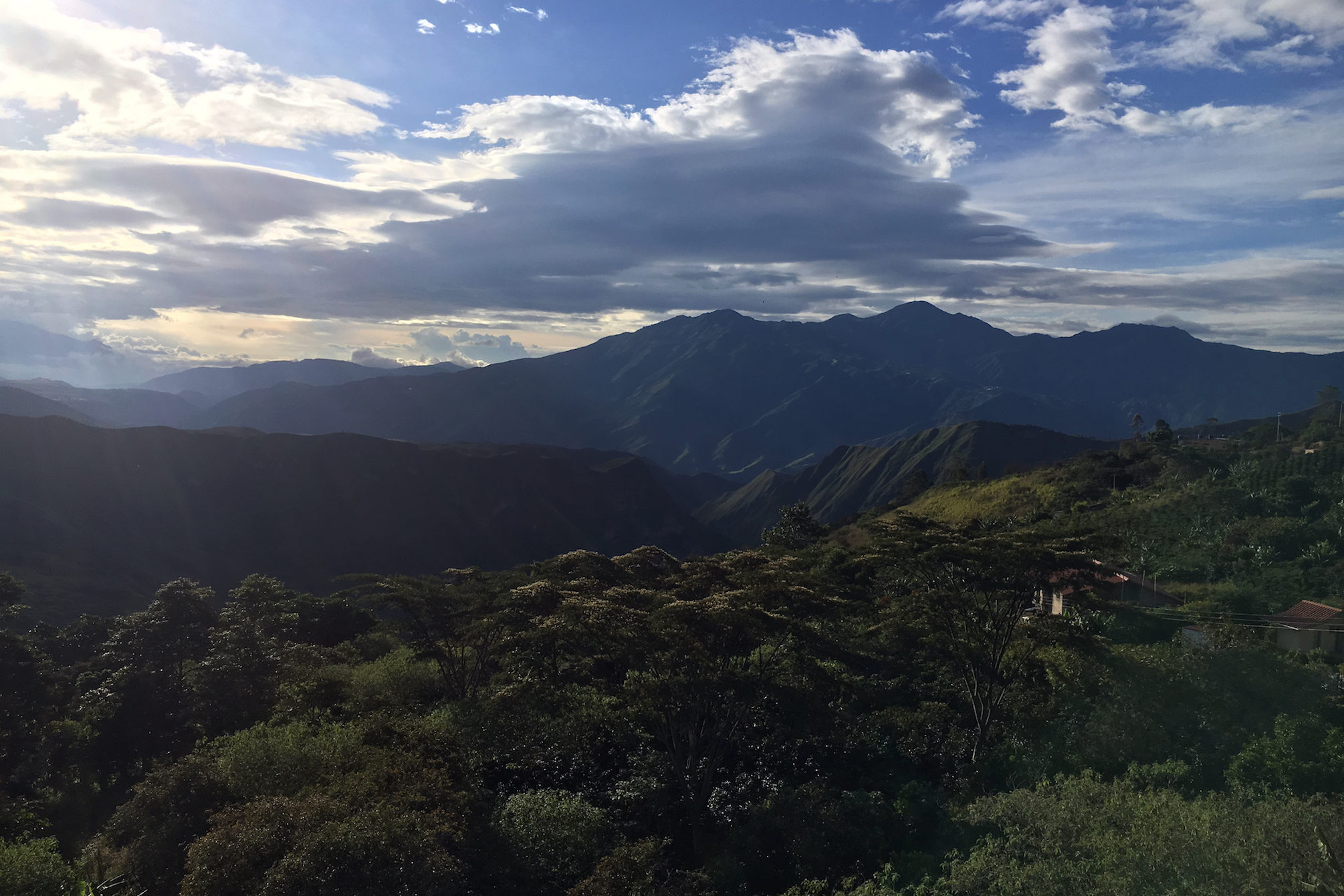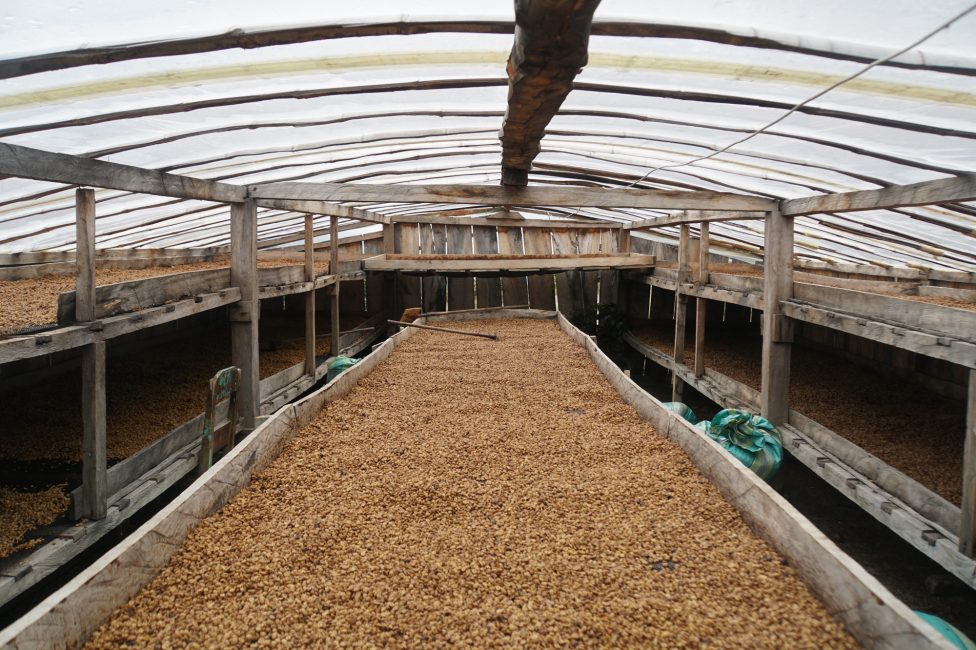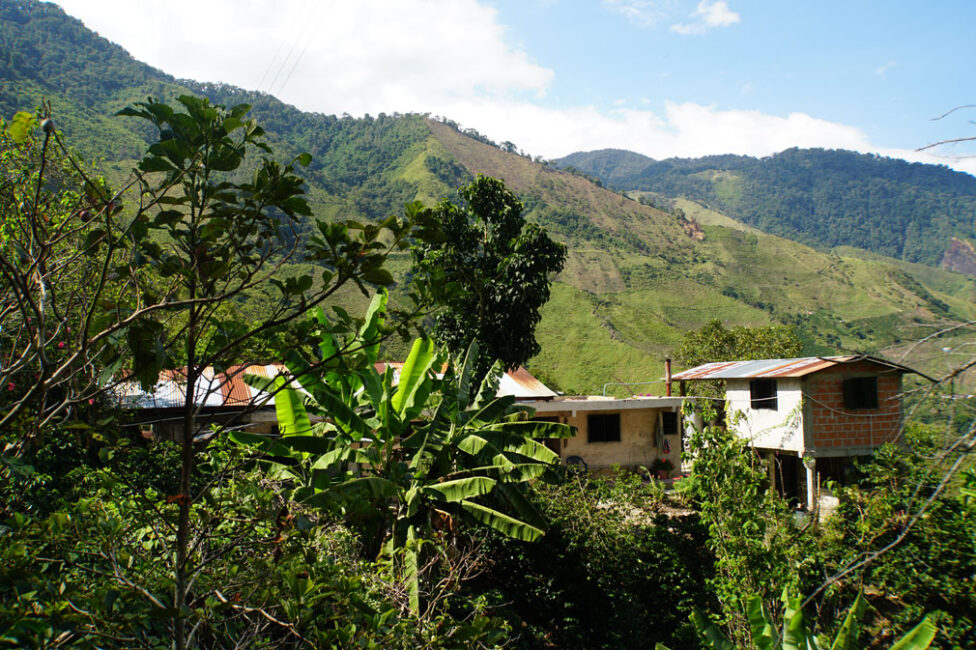Small Producers of Juanambú
Floral and complex with a syrupy mouthfeel, sugarcane sweetness and notes of plum, blackcurrant, black tea and dark chocolate.
This coffee was produced by 60 smallholder farmers from the area around Juanambú Canyon in Eastern Nariño, Colombia. Around an hour’s drive north from the departmental head of Pasto, Juanambú Canyon and incredible native vegetation around it are stunning examples of Nariño’s astonishing landscape and are locations of great historical significance.
Nariño is located in Southwest Colombia, bordering Ecuador. Coffee in Nariño is grown at elevations that reach 2,200 metres above sea level, making it some of highest grown coffee in the world. Typically it is very difficult to produce coffee at such high altitudes (as many plants suffer from ‘die back’) however Nariño’s proximity to the equatorial line and steep hills around the volcanoes provide a great angle for sun exposure, creating the right micro climate for coffee plants to thrive. The high altitude of cultivation combined with warm tropical days and cools nights allows for slow maturation and development of the coffee cherry, giving time for concentrated sugars to develop in the fruit and resulting in a very unique, sweet, and complex cup profile from this region.
Until recently, much of Nariño’s potential remained largely untapped. This is in part due to the fact that most of the forty thousand coffee producers in Nariño are incredibly small (averaging less than 2 hectares each), and are often located in very remote areas. These factors, combined with ongoing conflict in the region has discouraged investment in coffee development and made it difficult for coffee buyers to access these exceptional coffees. In 2010 – 2012, this started to change, thanks in large part to the Colombian Cup of Excellence which shone the light on two exceptional lots from the Buesaco municipality in Northern Nariño. This huge win made it clear to many growers from the region that their coffee had the potential to be sold as true specialty grade, and that they had the opportunity to seek greater premiums than they were receiving through other certification schemes.
Inspired by this new opportunity, a small group of 17 growers got together and formed the first regional association, called Grupo Empresarial Buesaco. With the assistance of the local technical school, the group started to organise themselves in to a small operation with the aim of buying, warehousing and commercialising specialty coffee. The association grew very quickly and soon became too big for the initial group, who decided last year to separate and start a new association, focused primarily on specialty.
Today Alianza Café (the speciality off-shoot) is managed by six members of the Benavides family, who are committed to running the association with transparency and with the final goal of improving the income of the growers that participate in their programs. Today some 400 producers from across Northern Nariño are represented by Alianza Café. Their farms are located in the Eastern municipalities of Buesaco (where this lot is from), Arboleda and Tablón de Gomez.
This coffee comes from the small producers of Juanambú Canyon in the municipality of Buesacao, who have small farms (averaging 1.5 hectares in size) at 1,800 – 2,200m above sea level. Every family does their own harvesting – usually with the help of neighbours, and manage their own self-sufficient wet-mills and patios (open or covered) for drying. After the perfectly ripe cherries are picked, they are pulped by passing them through a manual pulper at the family farm (usually located close to the main house). The waste from this process will be used later as a natural fertiliser for the coffee trees. Depending on the conditions, fermentation can range between 12 up to 48 hours. Some producers will add several layers of wet parchment over the course of a few days, which is thought to add complexity to the fermentation process and final cup profile. Luckily, Nariño is blessed with some of the best drying conditions in the country due to the micro-climate and high altitude of the region, providing lower relative humidity, more wind and more sunny days than other areas of the country.
Nariño typically has a wet season with periods of continuous rain, followed by a dry season, which means that there is only one flowering period a year and therefore one harvest, usually in April – July (this is different to other parts of Colombia where two harvests are the norm). This means, that in order to survive, producers must have other economic activities, which typically include harvesting and selling plantains, fique (a fiber used to make rope) and/or cuy (guinea pigs).
HISTORY OF BUESACO
Juanambú Canyon itself is located in the municipality of Buesaco. Although Buesaco was founded in the early 1700s, its history becomes interesting during Colombia’s war of independence. Nariño became famous as one of the few states in Colombia that sided heavily with the crown instead of the independence armies. Pasto was an important colonial town and was in the centre of commerce between Bogotá and Quito. Residents had every reason to side with peace and stability, not the change of the status quo that Simon Bolivar promoted.
After heavy fighting in different parts of Ecuador and Colombia, the Spaniards and revolutionaries eventually met in the Juanambú Canyon, a beautiful part of Buesaco where steep ridges come down meet at a small river. The fight took place on top of a thin bridge, and after heavy losses the revolutionaries were able to beat back the Spaniards and continue their way south to finalise the battle for independence.
Conflict and war returned in the 1990s and early 2000s as FARC guerrillas took over northern Nariño. This region was ripe to serve as a centre of operations for illegal groups. The government did not have a heavy presence in the region, and the altitude in much of the municipality was ideal for growing opium poppy plants and coca (and thus of great interest to the rebels). When talking to Pergamino, our export partner in Colombia, they reveal that most of the growers that they work with in the area still become coy and awkward when asked what they did during this time. They explain that the only option was to grow these goods, as there was no real market for coffee and they were the only products that a grower could sell and earn a living.
Luckily the guerrillas were forced out of Buesaco almost 10 years ago, and the region is now completely safe to conduct normal economic activities such as growing and buying coffee. To this end, specialty coffee now plays a very important purpose; in making this region prosperous, and ensuring its future is one of peace and not of recurrent conflict.


